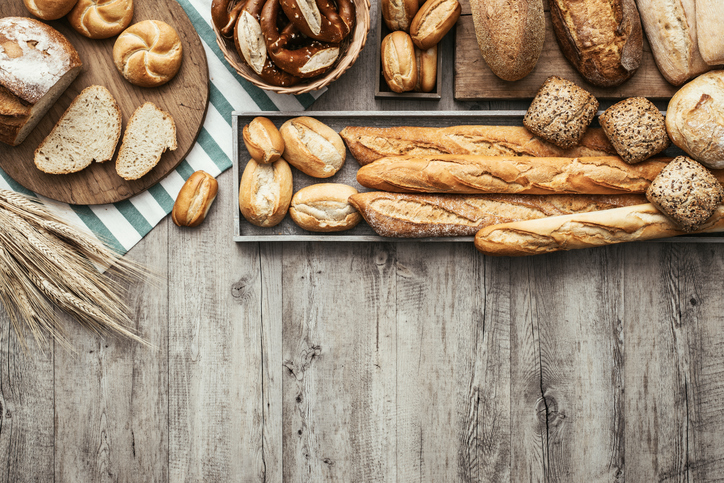
Coeliac disease, gluten intolerance
This intestinal disease is increasingly common, and sufferers must eat a wheat-free diet.
Coeliac disease makes sufferers permanently intolerant to gluten, a protein present in wheat, oats, barley and rye. It occurs when the lining of the small intestine is damaged, destroying their villi and giving rise to a functional deficit and poor absorption of nutrients from food.
The most common symptoms are: weight loss, loss of appetite, fatigue, nausea, vomiting, diarrhoea, abdominal distension, loss of muscle mass, growth retardation, personality disorders (irritability, apathy, introversion, sadness), abdominal pain, bloating, treatment-resistant iron-deficiency anaemia. However, in both children and adults, the symptoms may be atypical or absent, making the diagnosis difficult.
There is a genetic factor to this condition, which explains why it tends to run in families
The importance of the diagnosis
The sooner the diagnosis is made, the quicker therapeutic measures can be taken to prevent complications.
- In the case of children, they suffer from retarded growth, their stools are soft and with a bad odour and they have a poor appetite. In these cases, they should be taken to a paediatrician as soon as possible.
- In adults, recurrent diarrhoea with signs of malnourishment can lead doctors to coeliac disease, more so if there is a family history.
A careful clinical examination and a blood test, which includes the serological markers of coeliac disease (antigliadin, antiendomysial antibodies and tissue transglutaminase) is used to diagnose the disease. Recent discoveries regarding the different clinical forms of coeliac disease (classical, atypical, silent, latent, potential, etc.), have shown that it is not always possible to establish a functional or clinical diagnosis of coeliac disease. Therefore, when diagnosing celiac disease an intestinal biopsy is essential. This biopsy involves taking a sample of tissue from the upper small intestine to see if it is damaged. The test must be performed before withdrawing gluten from the diet.
A gluten-free diet, the solution
The only effective treatment for coeliac disease is a gluten-free diet for life. Gluten is a protein that is found in grain seeds (wheat, oats, barley, rye) which has no nutritional value, but is of great use in the food industry, as it makes bread and flour baked goods spongy.
Foods that contain gluten
- Bread and flour made with wheat, barley, oats, rye and triticale (a mixture of rye and wheat). Sufferers must give up baked goods such as pastries, cakes, biscuits and cookies, as well as Italian pasta and Semolina wheat.
- Processed food is more likely to contain traces of gluten or be contaminated, since it has been handled, processed and packaged (canned soups and creams, stock cubes, seasonings, etc.).
- Malted drinks, fermented or distilled from cereals, such as beer, barley water or some spirits.
In addition to these, there are some products on the market that may contain gluten, so you must always check the ingredients on labels: cold meats, yoghurts flavoured with fruit, cheese, ice cream, jelly beans, pâtés, canned meat and fish, coffee substitutes and fried nuts or nuts roasted with salt.
Suitable for coeliacs
People with coeliac disease must eat natural foods and gluten-free products that, if possible, contain a lot of fibre and other nutrients.
- Milk and dairy products: cheese, cottage cheese, cream, natural yogurts and curd.
- Leafy and other vegetables, root vegetables and fruits.
- All kinds of meats.
- Fish without batter, seafood in brine or in oil.
- Rice, corn, cassava and vegetables.
- Sugar, honey, coffee beans and ground coffee, tea and soft drinks.
- Natural salt, spices, oil and butter.
If you are unsure whether a product is gluten-free, don’t eat it.
This post is also available in: Italian
